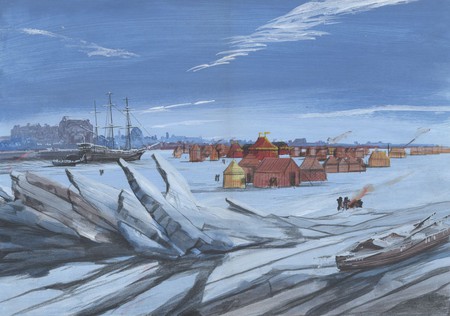

My pathway engages the theme of history in both the novel and the film. The four centuries through which Orlando lives provide an evocative and symbolic background for the story.
Intertextuality in Orlando
let's see what happens
Intertextuality in Orlando: gender fluidity and the re-shaping/accentuasion of themes and essence.
An exploration into the ways in which Woolf and Potter construct their versions of Orlando and how these show similar motives as authors, or perhaps how these motives might differ, possibly due to the fact that they use different mediums to tell the same story.
As part of my Film Studies course, I will be using various strands of investigation into how a very personal piece of literature can be re-moulded into an equally personal film project. At the moment I have no clear strategy but as I work my way through this domain, I will attempt to make a coherent pathway that will enable me (and anyone else foolish enough to tread in my footprints) to make some sense of the transference from paper to celluloid
a look into the production design and the obvious themes of gender vs identity and the need to conform to society.
Exploring intertextuality in Sally Potter's 'Orlando' (1992)
Looking at Sally Potter\'s film version of Virginia Woolf\'s novel, \'Orlando,\' specifically regarding it\'s intertextual nature. When Tilda Swinton and Sally Potter were being interviewed at the BFI, they both talked about how passionate they were about creating Orlando the film, and they hoped that they could replicate the way the novel made them feel and succesfully represent this on film. As discussed in a seminar, one person's 'feelings' about a novel can vastly differentiate from another's (usually hindering the audience's enjoyment because they did not feel the same), so, when translating a medium from novel to film, which idea will resonate with all? Potter has chosen the ideas 'death' and 're-birth.' What is also interesting, is that a screenwriter will usually begin a script perhaps not totally aware of their controlling idea. Therefore, is the key to succesfully adapting a novel to film finding the 'controlling idea' of a novel and reproducing it cinematically?
in my pathway i will be looking at the intertexuality between Virginia Woolf's 1928 novel and Sally Potter's 1992 flm Adaptation.
Exploring Intertextuality in Orlando
How does Sally Potter use 'Water'?
Examination through archive materials of how Sally Potter takes the artistic description of scenes from the novel and translates that into a visual form through cinematography and set design.
Some explanations for Potter's decision on certain locations, set and costume design, and focusing on cinematography.
What are the implications of predetermined Powers and Colours motivating each character and setting? How do these attributes influence the film's aesthetic?
The focus here is on the nature of design in adaptation. One example includes key aspects such as location from pre-production sketches to how the final set looks in production, and how this relates to the words found in Woolf's novel. Additionally it's interesting to note the differences in adaptation across Orlando's 400 year journey.
Copyright ©2026 Adventure Pictures. Some rights reserved. Non-commercial use of text and images in which Adventure Pictures holds the copyright is permitted, with attribution, under the terms and conditions of a Creative Commons BY-NC-ND License.